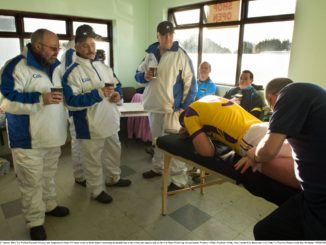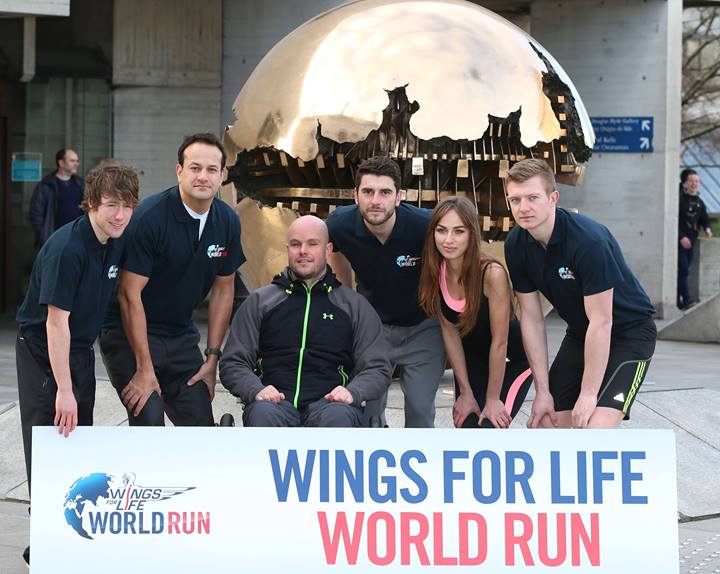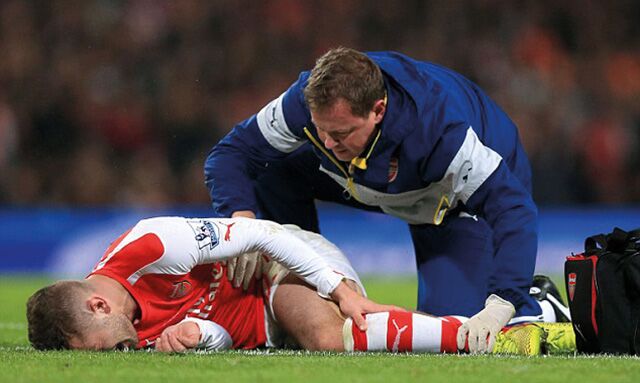
The reality of living with a spinal cord injury, explained by Mark Pollock, a Wings for Life ambassador, is beyond comprehension at times. He is paralysed from the waist down after falling from a second story window in London in 2010.
He emphasied the secondary issues that make life difficult for people with spinal injuries such as the lack of independence, the other health issues like lack of bladder control and pressure sores, and depression in some cases. Pollock had been reluctant to talk about such issues in the past until he met other people in similar situations who didn’t have the platform to raise awareness.
Increased funding; awareness, and more scientists are needed to find a possible cure for spinal injury patients. This was the message at the launch of the Wings for Life World Run launch, which will raise funds for spinal injury research across the world.
Wings for Life CEO, Anita Gerhardter, stressed it was important for people to realise that spinal injury is not just something that affects adrenaline junkies. “50 per cent of spinal cord injuries are the result of everyday traffic accidents. 25 per cent are the result of falls…then there are various causes, acts of violence, gunshots, stabbings…and at the very end with three per cent, there is extreme sports.”
Pollock reiterated this message as he had played a lot of extreme sports but his accident occurred in a domestic situation, something he said people need to be aware of.
“I didn’t expect to have a spinal injury, you don’t expect to have a spinal injury therefore it’s not on the radar. But from the moment I hit the ground I joined what is a global community of people who don’t have any hope of recovery. Currently there is no prospect of recovery and there is no cure right now, today.”
Asked what are the chances of finding cure for spinal injuries Dr. Jessica Kwok, a senior research associate at the Cambridge centre for brain repair, said:
“I would say the chances are actually quite high because there are actually quite a number of clinical trials which are either completed in the phase one clinical trial or going into the second phase clinical trials. So of course these are closer to actually being able to finally be in the market and being useful to spinal cord patients.”
Last year the Wings for Life charity received 142 applications from scientists around the world for funding.
Pollock said a lot of spinal injury patients believe that a cure could be found. “We’ve got to have hope, that’s how we explore the boundaries of what’s possible. But let’s be absolutely clear about this, there isn’t enough money in the system, there aren’t enough scientists being funded, there aren’t enough people interested in this subject just yet but that’s why the run is so exciting, starting to get the message out in 35 locations all over the world.”
Welsh former sprint and hurdling athlete Colin Jackson is the Race Director and explained the concept of the race. It takes place on May 4th and runners across 35 countries in six continents will set off at 10am GMT (11am in Ireland). After 30 minutes a car chases after the runners (at 15km/h) and once it passes a runner, that person’s race is over. Jackson said the race “is a real unique opportunity where you can compete against someone who is miles away from you but roughly in the same situation”.
The Irish segment of the race will take place in the Ring of Kerry and 100 per cent of all entry fees will be used for spinal cord injury research. The Wings for Life World Run was launched in Google Dublin Headquarters Monday and was broadcast live on redbull.com.
Aisling Kett




Leave a Reply